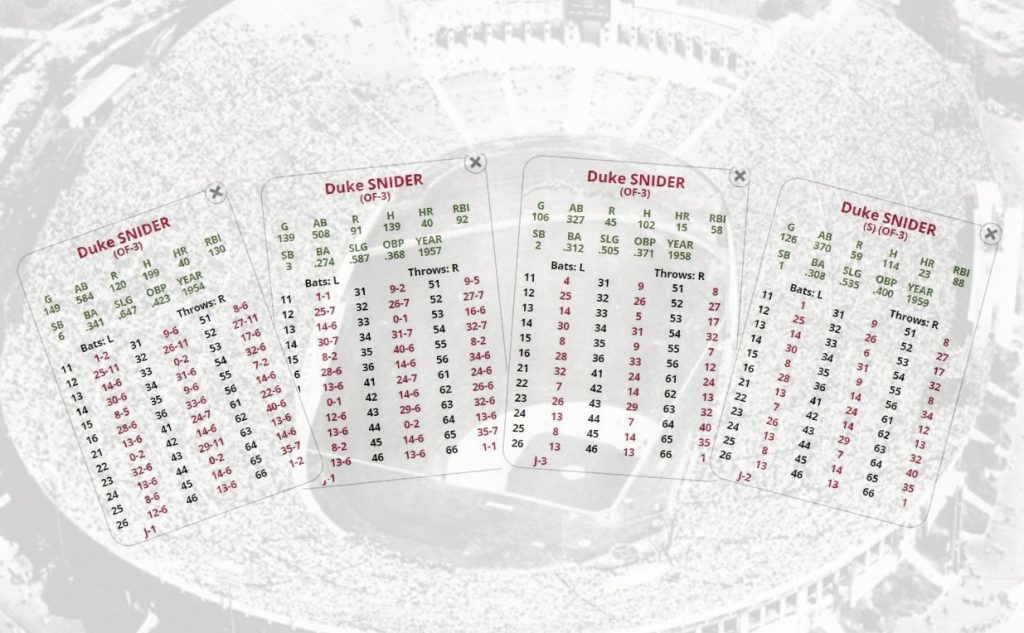
“Willie, Mickey, and the Duke.” Whenever I hear that line from Terry Cashman’s song Talkin’ Baseball I can’t help but think of nostalgic 1950s New York City baseball. Willie Mays, Mickey Mantle, and Duke Snider. All three Hall of Fame center fielders worthy of writing about, but not all at once in this column. So, this edition of Game Changers, we’ll look at Duke Snider and a turning point in his career…moving to Memorial Coliseum.
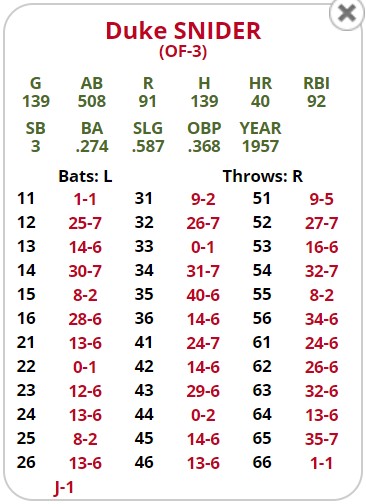
After the 1957 season the Brooklyn Dodgers left Ebbets Field and moved to Los Angeles. This was a game changing moment for any left-handed Dodger hitter. Prior to moving to Los Angeles, Snider had hit 40+ homeruns in six consecutive seasons, including 40 in 1957. It would be the last time he’d ever hit 40 or more.
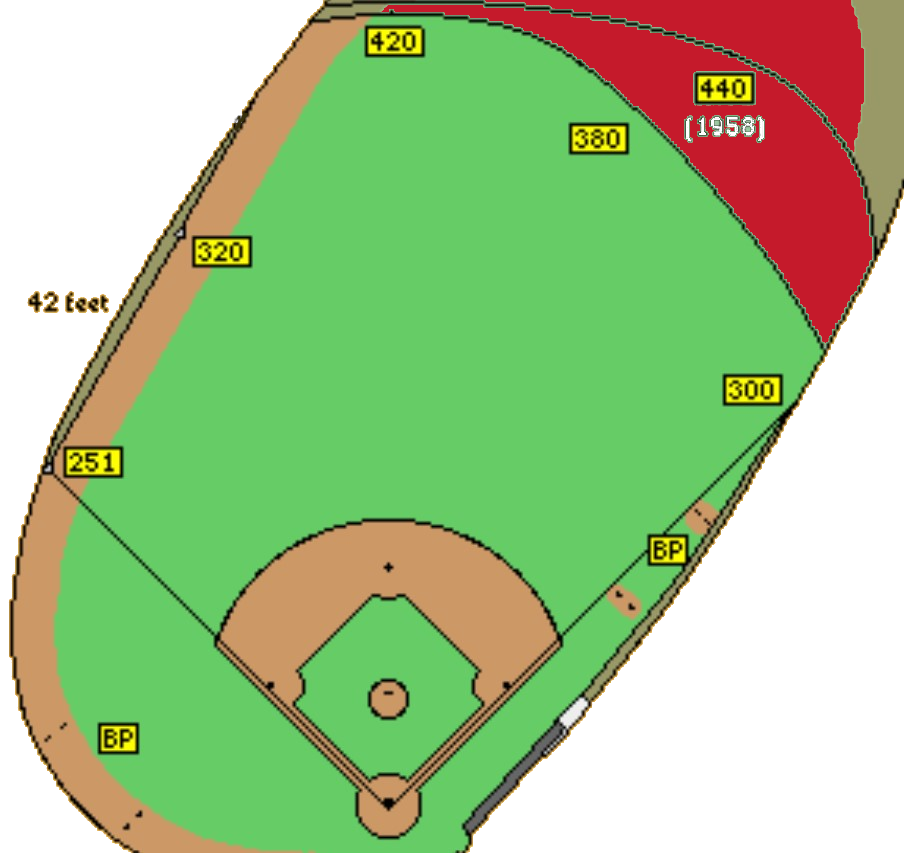
Granted Snider was getting older and dealing with some nagging injuries. However, those were small factors when compared to coping with a 440-foot right field fence during the 1958 season. Yes. 440 feet. Snider only hit 15 round trippers in 1958, with just six on home turf. Thankfully they moved the fence in to a still lengthy 380 feet starting in 1959.
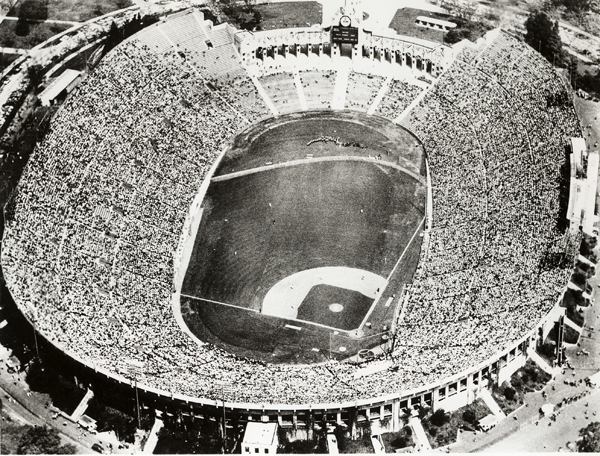
The Coliseum had some odd dimensions. Besides the cavernous right field, left field was a paltry 251 feet down the line and only 320 feet to left center. This triggered the need to construct a 42-foot screen in left to cut down on homers. Top things off with 420 feet to center along with spacious third base side foul territory and almost no foul territory down the right field line, and well, you had one unusual ballpark.
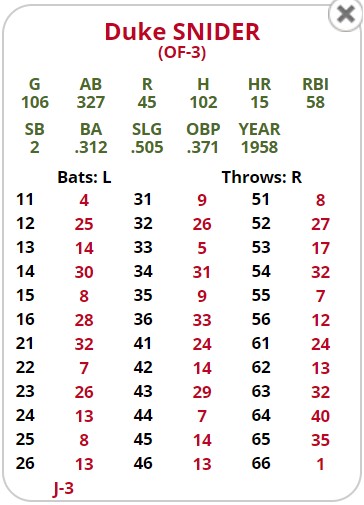
In an ESPN Rob Neyer article, he writes of how Snider and Willie Mays talked about the Coliseum before their first game there in 1958 and quotes Mays as saying, “Look where that right-field fence is, Duke. And look what they gave me: 250 feet. They sure fixed you up good. You couldn’t reach it with a cannon. You’re done, man! They just took your bat away from you.”
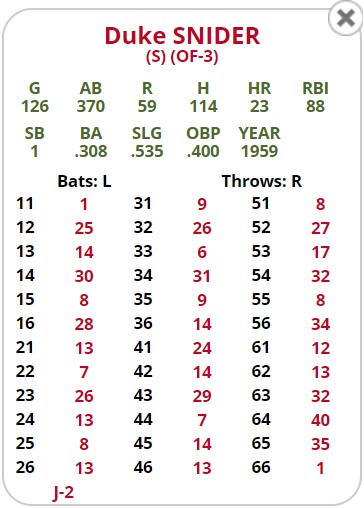
Snider played the remainder of his Dodger career in the Coliseum. He bounced back in 1959 to hit 23 homers, but that would be his last 20+ season. He was elected to the National Baseball Hall of Fame in 1980 on his eleventh ballot.
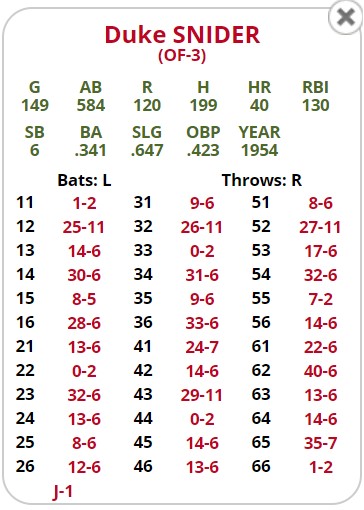
APBA baseball players can look at any Snider card prior to 1958 and see the slugging difference. While in Brooklyn you could count on Duke having a first column 11-1 and 66-1 with three more power numbers. In the case of 1957, it was Snider’s last time dabbling in “monster card” territory with two ones and three zeros.
Game changers can come in many ways. Most often we’ll look at a person and how their actions changed the direction of baseball. However, this time is was an object, the zany entity known as the Los Angeles Memorial Coliseum.
Recommendations: If you’re interested in more about Duke Snider or the Dodgers, consider these books:
- The Duke of Flatbush by Duke Snider
- Wait Till Next Year: A Memoir by Doris Kearns Goodwin
- Bums: An Oral History of the Brooklyn Dodgers by Peter Golenbock
- The Final Game at Ebbets Field by Noel Hynd
- Baseball Goes West: The Dodgers, the Giants, and the Shaping of the Major Leagues by Lincoln A. Mitchell
- Ballparks: A Journey Through the Fields of the Past, Present, and Future by Eric Enders
- Ballpark: Baseball in the American City by Paul Goldberger




Very good article! As far as a stadium changing a team’s performance, perhaps you could look at the 1884 Chicago White Stockings. The year before (1883) they hit 13 homers as a team! The next year, they hit 142 as a team with 4 players over 20. One Chicago player that year, Ned Williamson, hit 27 to establish a mark that would not be broken until Babe ruth came along 35 years later. The next year (1885) they hit 54 as a team (but the season had been lengthened by 30 games over the 1883 season). I’m sure some stadium shenanigans were in place for the 1884 season.
Daniel: That’s some great stuff. Do you happen to have any APBA cards from that era you can share with me? Especially 1884? APBA GO has 1883, but that’s it.
Hi Kirk,
No cards I am afraid. As far as I know, APBA only ever produced one Pre-1900 set: the 1883 season. I have that disc for Baseball for Windows, but not the actual cards. There were a few pre-1900 players in the Original Franchise All-Star (OFAS)
card sets (Duffy, Hamilton, Thompson, Delahanty) but that’s it as far as I know. The OFAS-3 set that came out had NO pre-1900 player’s seasons. Which is really a shame (KILLER cards by Tip O’Neil, Pete Browning, Charlie Comiskey, Billy Lange, etc.. therefore don’t exist). The lack of these cards and teams is a shame, as BBW has a section in their League Manager to set Pitcher Durability to “19th Century”.
The closest approximation I could come to would be to use “Steve’s APBA Computer to generate the cards (by hand entering the Stats – which is what I do to use these players, but I’m not sure how accurate they would be, because that APBA Computer only goes to 1903.
We interviewed Steve Stein on episode 24 of Double Take. From that conversation, I know he has an interest in 19th Century cards too.
https://anchor.fm/double-take-podcast/episodes/Episode-24–Steve-Stein-Interview–The-APBA-Card-Computer-ecop73
Yep – I know. I listened to that podcast. Very fun. I keep hoping he will adjust his Card computer to go back to 1876!
BTW – I’m in Michigan too! (Southeast). Keep up the good work.
No one benefited more from leaving the Coliseum than Sandy Koufax. Granted, he was maturing late (as lefties do), but he went from a home ERA of 4.00+ to below 2.00 his last five seasons. In ’64 his home record was 12-2, 0-85, 6 shutouts.